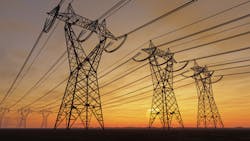By Ron Shinn
We have taken electric power for granted for too long. Flip a switch and the lights come on. Plug in a dryer and it heats up. Wire up an electric injection molding machine and it is ready to make parts.
We have enjoyed that reliable, consistent electric power at very low rates, compared with most of the manufacturing world. You could argue that it has been a driver in domestic manufacturing.
Now there is mounting evidence that availability of dependable, cheap electric power may be coming to an end. But what about all those new solar panels and wind turbines? Don’t they generate cheap electricity? The answer is far more complex.
Clayton Penhallegon Jr., president of Integrated Services Group (ISG) in Thomasville, Ga., told attendees at the recent SPE Annual Blow Molding Conference (ABC) in Philadelphia that turbulent times are coming for manufacturers in energy-intensive industries.
The bad news: Prices are going up; quality is going down; you can’t change it, he said.
The good news: Successfully dealing with coming changes will provide multiple paybacks to manufacturers.
ISG, in business since 1993, engineers and optimizes industrial cooling systems. Penhallegon also has extensive experience in the electrical generation and distribution industries.
Since the early 1900s when it started to grow significantly, the trend has been to centralize U.S. power systems to achieve a reasonable balance between reliability and cost. High-voltage transmission grids connect generating plants with large users such as cities or manufacturing plants with substations. A hub and spoke system moves electricity to decreasing voltage substations.
Penhallegon said 99 percent of power flows continuously in one direction at most levels and historically, little non-utility power generation was connected to the grid. Small generators typically work in isolation. “The system is not fragile, but it is delicate,” he said.
The power industry started to change after the 1970s energy crisis and retail markets were deregulated. This led to utility and independent power generators and others entering the market, and their services were mostly layered on top of the existing grid.
From about 2000 to 2022, industrial power prices were fairly steady or declined in some areas thanks to competitive power contracts, pricing-driven load management rates and steady gas prices.
Now there is pressure to reduce carbon emissions, the historical core of power supply generation, Penhallegon said. Widely distributed generation has been added to the grid, causing cyclical and random variations in output. Varying and even reversing grid power flows have increased the chance for problems. There have been reliability warnings in the Midwest and West Coast this summer.
Penhallegon said manufacturers need to prepare for higher pricing and variability. Average costs for electric power could rise by 25 to 50 percent. Market-based prices may go even higher, he said.
Reduction in the use of coal and gas to generate power reduces the amount of power available to transmit as well as available reserve. The impact of extreme weather and other events is greater when reserves are low, Penhallegon said.
In addition to higher prices and uncertain reliability, Penhallegon said power quality — steady, flicker-free electricity — could also decline.
Power supply must become a consideration in manufacturers’ decision-making process. That includes adjusting production outputs, factoring power resilience into equipment purchases and locating operations in areas that have the most reliable power supply.
Penhallegon also urged plastics processors to re-examine their traditional energy efficiency programs, look for tailored electricity purchasing approaches that best meet their needs, and lobby regulators for help.
At the plant level, using less energy is the best defensive strategy against expected increased power costs. Energy savings measures can also sometimes provide non-energy benefits such as reducing capital and maintenance costs.
Once electricity prices rise significantly, strategies such as interrupting or shifting selected operations might have to be used. Lift truck battery charging, resin unloading and reclaim operations are examples. Plant operators might need to calculate the marginal cost break-point of running production compared with shutting it down.
Penhallegon urged processors to plan for disruptions such as rolling blackouts, mandatory curtailments, short-interval transient disruptions and long outages due to equipment failure or other grid events.
“Planning for turbulence is the key,” he said
One ABC attendee said the presentation was “sobering” because power availability is something he never worried about.
Europe may provide a glimpse of what’s to come. Electricity costs have doubled since January, due primarily to the war between Russia and Ukraine. The European Plastics Converters, which represents 50,000 plastics processors, is warning that without help from the European Union, there is no business case for some of its members to continue production.
Sobering, indeed.
Ron Shinn, editor






